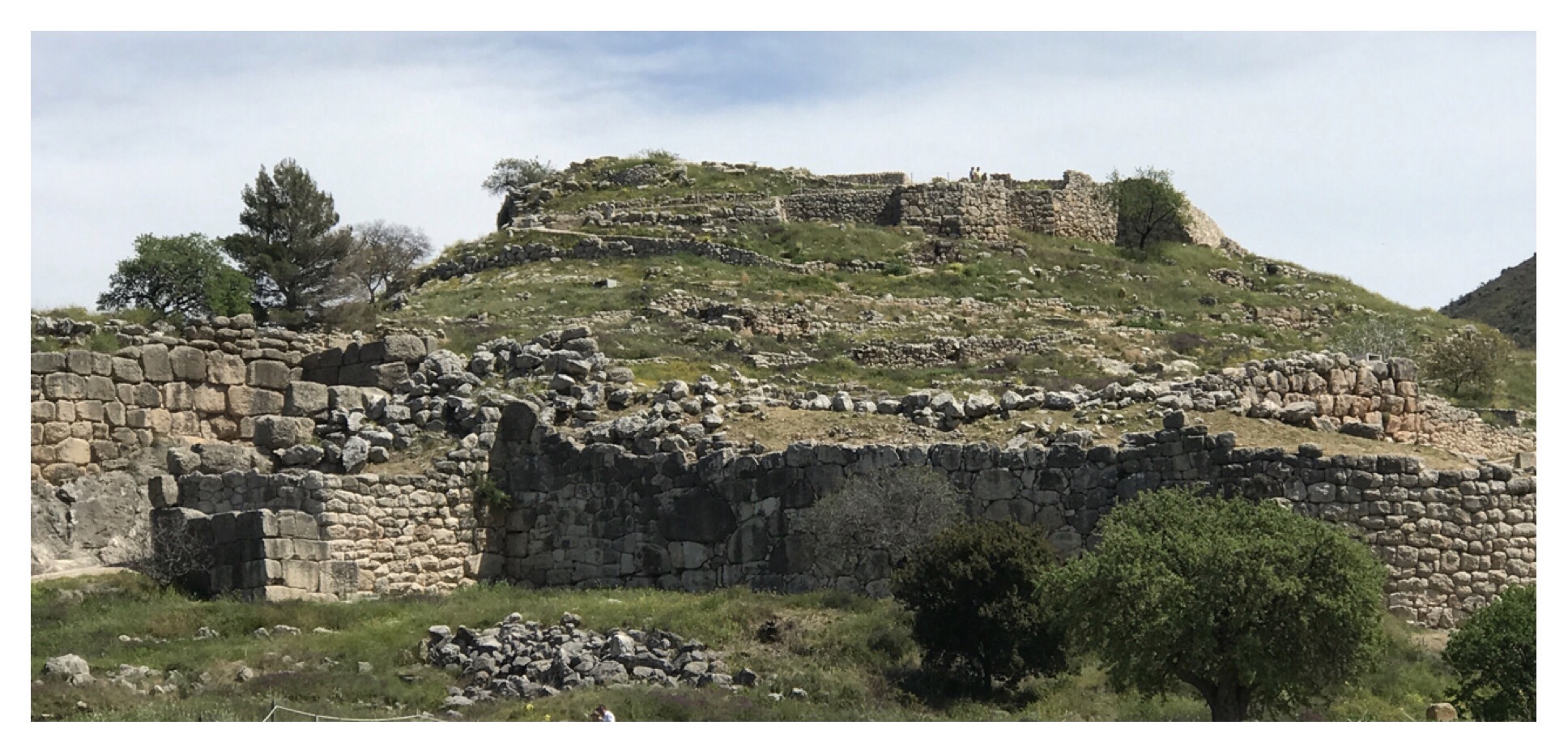


Day 90 of 111. Mycenae, Greece
Here we are at another Acropolis, this time in Mycenae. This site is especially significant because of the scholar/historian, Schliemann , a German, who studied Ancient Greece and self-funded an archeological exploration that found this ancient city of Mycenae that dates back to 1300 B.C. The most exciting early find was a lot of gold artifacts from the royal burial chambers (the round structure in the ground). There were masks and cups and round coin-like objects used as decorations on clothing. These are on display in the National Archeological Museum in Athens. A mask similar to the mask shown was thought, at first, to be the Mask of Agamemnon, but it was found to be the wrong age by several hundred years.
The oldest figurative symbol of anyone is the triangular carving of two lions over what is called, Lions Gate. The lions have no heads because the heads were probably made of a different material that did not survive. Again, there were quite a few steps to climb, but the views were spectacular. Below these 1300 B.C. ruins, there are prehistoric structures that date back several more thousand years!
April 5, 2017
Paul Groves